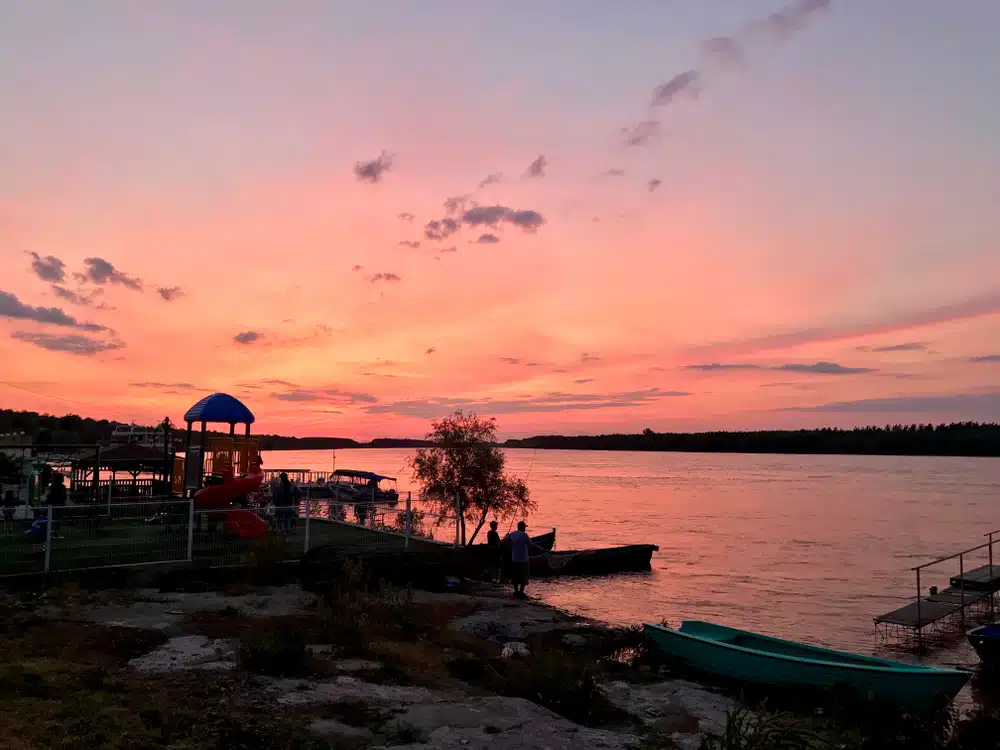Cuprins
Situated on the border between water and land, Mahmudia is a corner of paradise in the heart of the Danube Delta, a destination that perfectly combines the natural charm of the place with the echoes of history. Situated on the banks of the Sfântu Gheorghe inlet, Mahmudia offers visitors a gateway to one of the most spectacular ecosystems in Europe.
The history of the place stretches back millennia, bearing the footprints of civilizations that have passed through. From the ancient Greeks and Romans, to the Ottomans and the fishermen of the Lipovans who made the waters of the Delta their home, every corner of Mahmud reveals a testimony to this cultural diversity, inviting the traveler from home or abroad to discover a world where time seems to stand still.
Today, Mahmudia is a favorite destination for those seeking relaxation as well as adventure, and the following lines invite you to discover the history of this place, the attractions that make it special and the activities that make every visit an unforgettable memory.
- Mahmudia – geographical settlement and particularities of the area
- History of Mahmudia
- Salsovia Fortress
- How to get to Mahmudia
- What to see in the area
- What to do in and around Mahmudia
Mahmudia – geographical settlement and particularities of the area
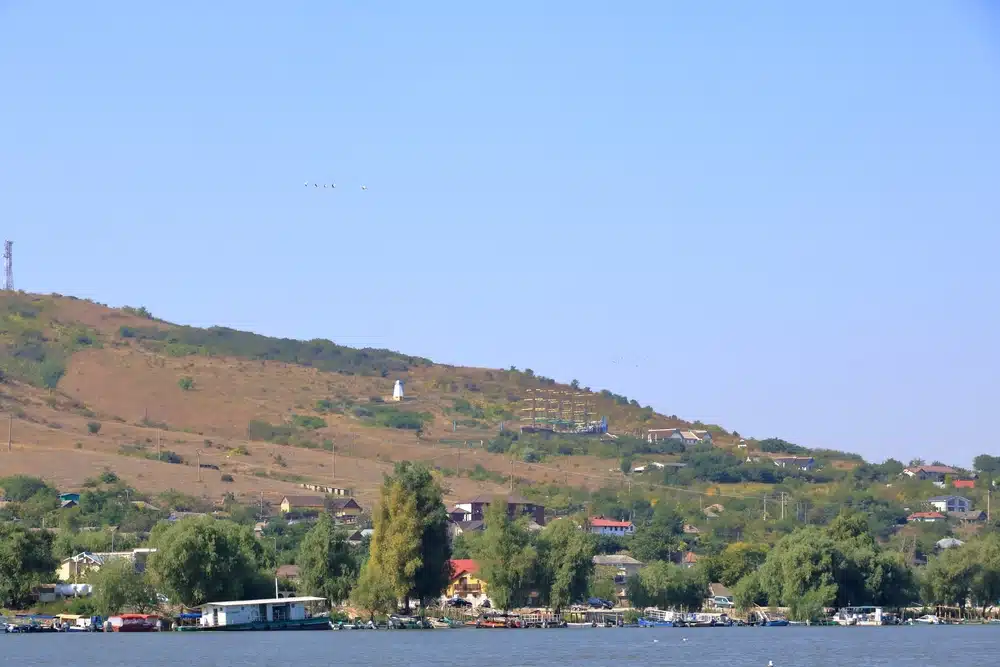
Port of Mahmudia
The locality is located in the north-eastern part of Tulcea county, at the intersection of the parallel of 45° 04′ north latitude and the meridian of 29° 05′ east longitude, being dominated by the Sfântu Gheorghe arm.
Administratively, Mahmudia is delimited by the following neighboring territories:
- to the north borders the administrative territory of Maliuc commune;
- to the east and south its borders meet those of the commune of Murighiol;
- To the west, its territory is bordered by the communes of Beștepe and Valea Nucarilor.
Access to Mahmudia is via the county road that connects the locality to the county seat, the city of Tulcea, located a few tens of kilometers away. Within the locality, the network of streets totals 18.6 kilometers, and the neighborhoods bear historical names, influenced by the populations that inhabited them over time, preserving their specificity to this day: the Turkish slum, the Lipovenetian slum and the Romanian slum (the latter being in the center of the commune). Close to the village there is a gorge known as Băltița, a place with resonance in the local tradition.
From the Town Hall archives, more specifically from the statistics for the years 1956-1958, we learn about the various place names used by the locals, denoting the use or characteristics of certain land: Linia Hârtop (a smaller hill), Cairac (an area from where stone was extracted), mereaua Sarnasuf (cultivated land), La munte, La baltă, Drumul Caraibil, La movilcă, Drumul Beștepe and Ghiolul Petre.
The fountains, another important feature of the locality, bore names related to the people who built them or to the households near whose courtyards they were located: Turkish Fountain, Onan’s Fountain, Calciu’s Fountain and Anani’s Fountain.
Situated on the right bank of the Sfântu Gheorghe Arm, Mahmudia is a gateway to the wild and mysterious landscapes of the Danube Delta, a place where nature reveals itself in all its splendor. Geographically, the location has contributed to the development of the locality, with the Sfântu Gheorghe inlet providing access to rich natural resources and facilitating trade, fishing and navigation.
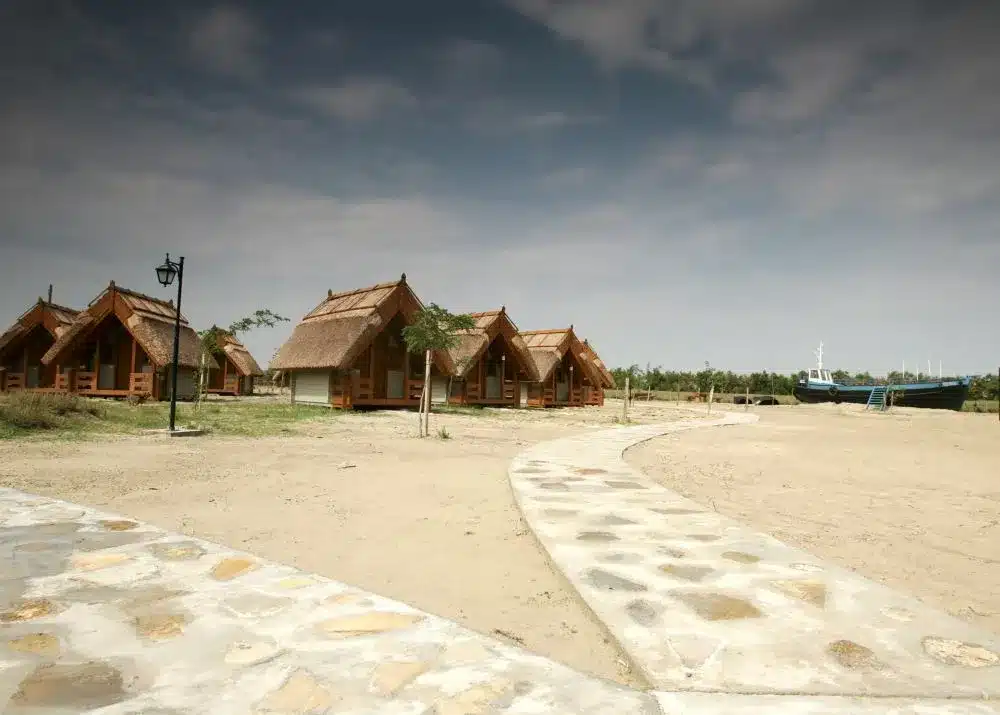
Cottages at Green Dolphin Camping
👉 If you want to explore these special places, Green Dolphin Camping offers the ideal setting for accommodation, relaxation and unforgettable moments. Here you can choose between the comfort of a simply furnished but welcoming cottage, or experience nature first-hand in the camping area. Amenities include a swimming pool, jacuzzi, free Wi-Fi, laundry, dining room, as well as indoor and outdoor showers, all designed to provide the comfort you need for an enjoyable stay.
History of Mahmudia
The town of Mahmudia was formed on the site of an ancient Roman settlement known as the Citadel of the Cross, the ruins of which can still be seen on one of the five hills in the area. Archaeological excavations uncovered traces of Geto-Dacian settlement, on which the Romano-Byzantine fortress of Salsovia was later superimposed.
The founding of the modern village is attributed to Transylvanian shepherds who arrived in the region in the 18th century. In 1832, Sultan Mahmud II fortified the settlement, built a geam and elevated it to the status of a town, changing its name. This status was short-lived, however, as by 1850 the town was already devastated after the Russo-Turkish war, according to historian Ion Ionescu de la Brad.
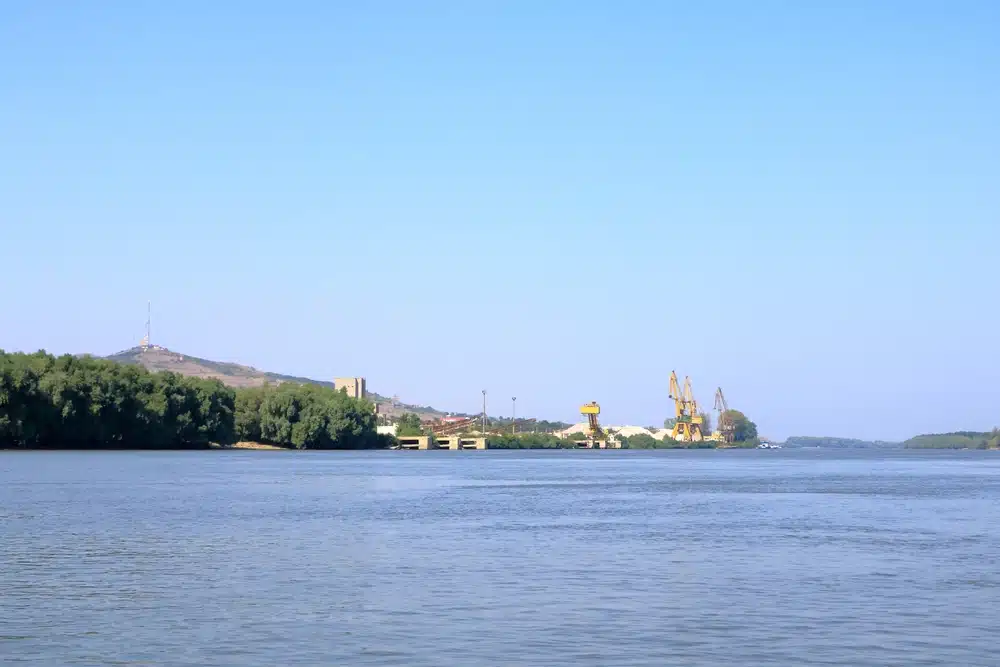
Mahmudia from the Danube
After repopulation, the locality was revived mainly by Romanian Mocanis, who built the school in 1879 and the church in 1864. Over time, Mahmudia also attracted other communities, such as the Russian Lipovans, fishermen by trade, who settled here because of the frequent floods from other parts of the Delta and the Danube. They joined the Romanian and Muslim populations, contributing to the ethnic diversity of the settlement.
Salsovia Fortress
The Roman fortification of this name originally served as a military fortress in the first half of the 3rd century, as attested by ancient sources such as Itinerarium Antonini and Tabula Peutingeriana. Later, Salsovia became an annex of the Roman military legions, strengthening its strategic importance in the area.
In Roman times, a civilian settlement existed on a wide plateau to the south of the citadel. This was naturally protected by three ste steep-sided valleys, offering added security to the inhabitants. The fortification is thought to have been destroyed during the reign of Emperor Valens. After this episode, settlement resumed in the early feudal period, when a rural settlement developed in the vicinity of the fortress. Its existence is confirmed by coins dating from the 11th century.
The ancient walls of the fortress, an impressive 2 meters thick, have suffered significant damage over time. Natural erosion, exploitation of the stone by locals and destruction during the Second World War have contributed significantly to their degradation.
How to get to Mahmudia
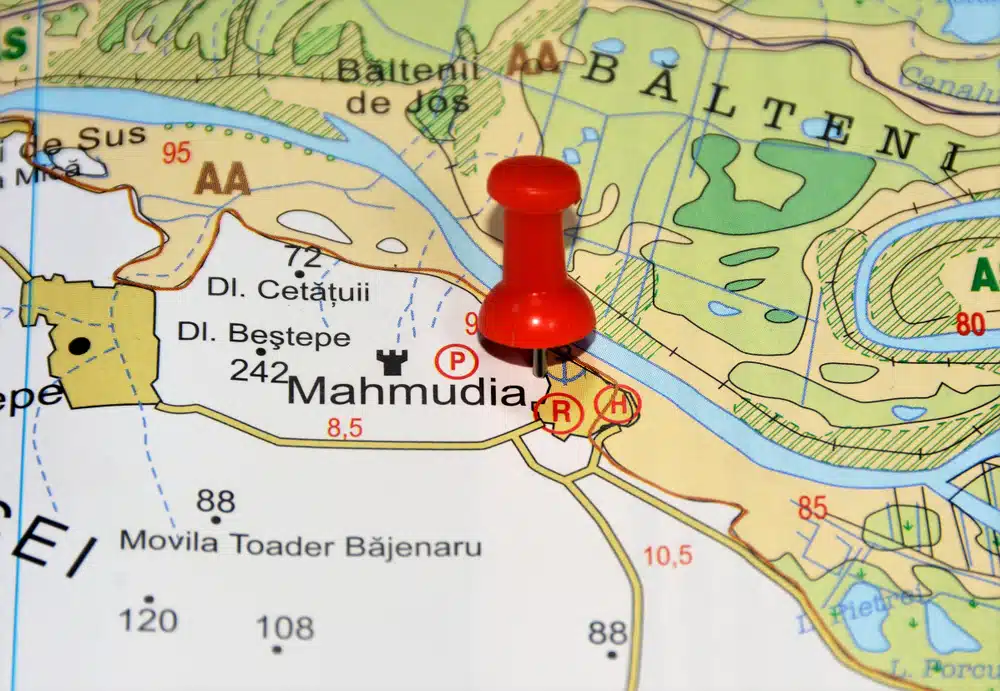
Map of Mahmudia
The town can be accessed in a variety of ways, depending on your preferences and available means of transportation.
By private car
For those who prefer the comfort of their own car, access to Mahmudia is quick and easy. The town is about 32 kilometers from Tulcea, and the journey is made on the county road DJ 222C, which connects the town to several localities in the Danube Delta. Along the way, the landscape becomes more and more picturesque and travelers can admire the natural beauty of the region. Arriving in Mahmudia, drivers can leave their car in a local parking lot and explore the area on foot or by Delta-specific means of transport.
By train
For those who prefer to travel by train, the nearest train station is in Tulcea. From here, travelers can take a bus or taxi to Mahmudia. This option offers a chance to see the region’s countryside, while the train ride adds a relaxing break before arriving in the Delta.
What to see in the area
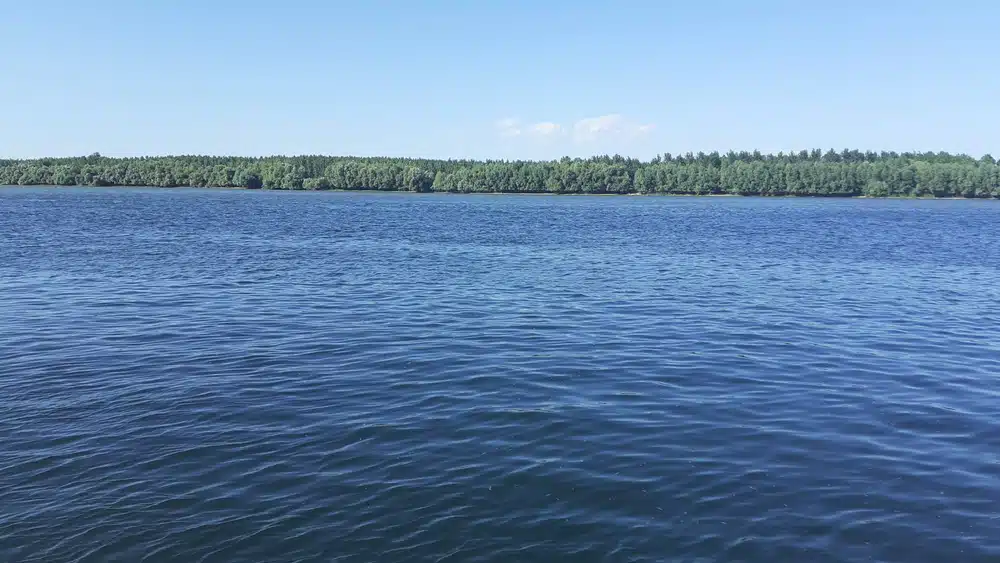
Danube at Mahmudia
Visitors to this locality can discover not only the natural beauty of the region, but also the traces of a history that stretches, as we have seen, over more than 2,000 years. Here are some of the sights that await you:
Fisherman’s House
If you want to better understand how the life of the fishermen in the Danube Delta has unfolded over the past decades, a stop at the Fisherman’s House in Mahmudia is a must. Here you’ll discover an impressive collection of old documents, photos telling the history of the place over the decades, traditional fishing gear and even clothing specific to the region’s Russian-Lipovanian community.
The Fisherman’s House is not just a museum, but a living place of local tradition. Here, visitors can learn about the customs of the fishermen of the Delta and experience the local gastronomy. You can savor fried fish or fish broth cooked by locals and even learn how to prepare these dishes, guided by those who know the authentic recipes of the Delta.
Papure workshop
The workshop in Mahmudia is the only place in the Danube Delta where they produce articles made of papure, specific to the region, being a continuation of the tradition of these places.
The studio is famous for the originality of its designs and the use of bright colors in the decorating process – especially blue, a shade often associated with traditional Russian architecture.
Tunnel Cave
It is located on the right bank of the Sfântu Gheorghe arm, near the pier, and is accessible through a north-north-east oriented entrance. It stretches in a single gallery, 19.20 meters long and develops in a north-east – south-west direction. At a relative altitude of 8 meters above the Danube banks, the gallery varies in height between 1.8 meters and 1 meter.
The origin of this cave is a matter of debate, given its size and the shape of the unique gallery. One hypothesis suggests that the cave was formed by erosion caused by the waters of a small tributary of the Danube, which emerged from a limestone spur. Another possibility is that the cave was excavated during the construction of the ancient fortress in the area of the present-day settlement, and the stone quarried was used to build the walls.
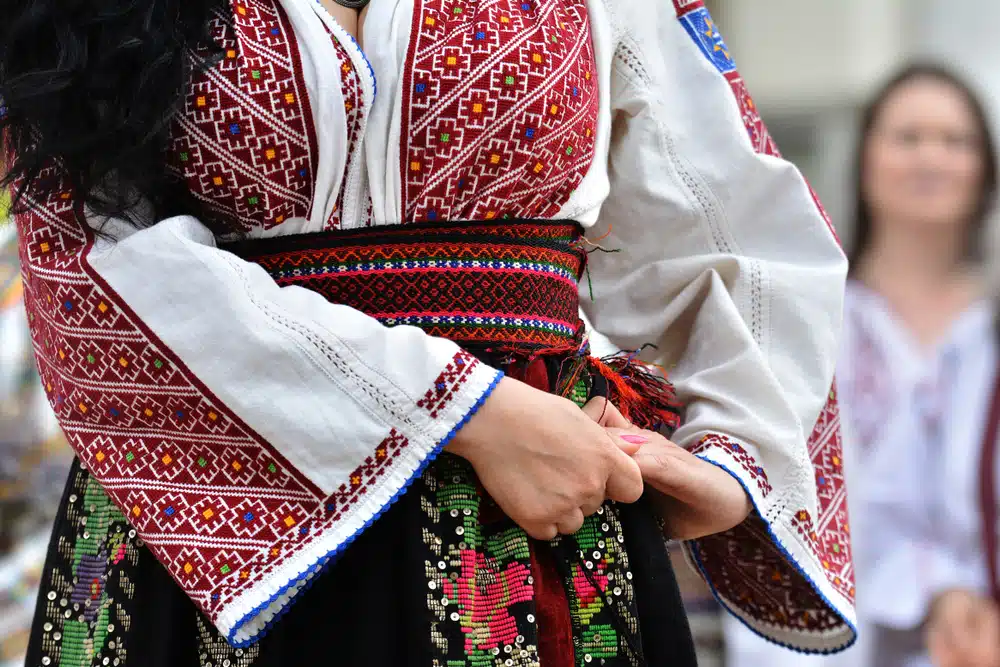
Traditional costume from Dobrogea
👉 The land between the Danube and the sea charms its visitors with the beauty of its places, but also with the hospitality of its inhabitants and their lifestyle. Learn more about the customs of this area in the article The most beautiful traditions and customs of Dobrogea.
What to do in and around Mahmudia
Whatever the season, the Danube Delta and, implicitly, Mahmudia, have something to offer to visitors of all ages, who decide to spend their vacations in the tranquility of these places. Here are some of the activities you can do here:
Admire the Danube from the waterfront near Mahmudia harbor
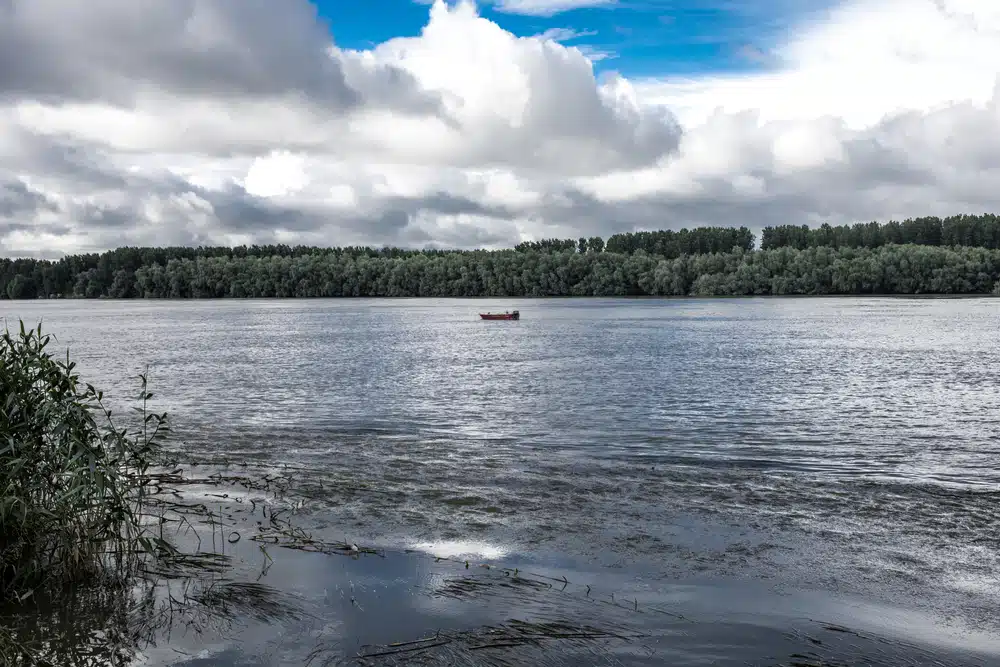
Monkfish on the Danube
If you’ve opted for accommodation in Mahmudia, you can start your morning or end your day with a stroll along the newly developed Danube promenade not far from Mahmudia harbor.
The three areas of the new recreational park here are multifunctional and include a geological park, the waterfront and a public garden, all built under the symbols of the commune: the fisherman, the water lily and the papura.
Have fun with the family at the Salsovia Adventure Park
Close to the remains of the fortress of Salsovia – which, although undeveloped, can be visited – is a unique adventure park designed in the shape of a ship. It’s the perfect place to spend a few hours in an energetic way.
If you’re visiting Mahmudia with the family, this place is a must stop. The park has 8 climbing trails on the structure of the ship, each of them adapted to one of the 5 levels of difficulty. Suitable for children over 4 years of age and adults alike, these trails are a safe and fun challenge that tests physical skills and coordination.
In addition to the climbing trails, the park offers a wide range of activities that add even more variety to the experience. Try zip zip-lining for an adrenaline rush or archery.
Visit the local school museum
If you’re in Mahmudia during the school year and the school is open, it’s worth visiting the museum housed in the Vasile Bacalu Technological High School, which houses about 300 artifacts from various historical periods.
The collection includes coins, vases and amphorae discovered at the site of the ancient city of Salsovia. In addition to these historical relics, you can also admire a number of ethnographic objects representative of the nationalities that have contributed to the cultural diversity of the region.
Take a trip to the Delta
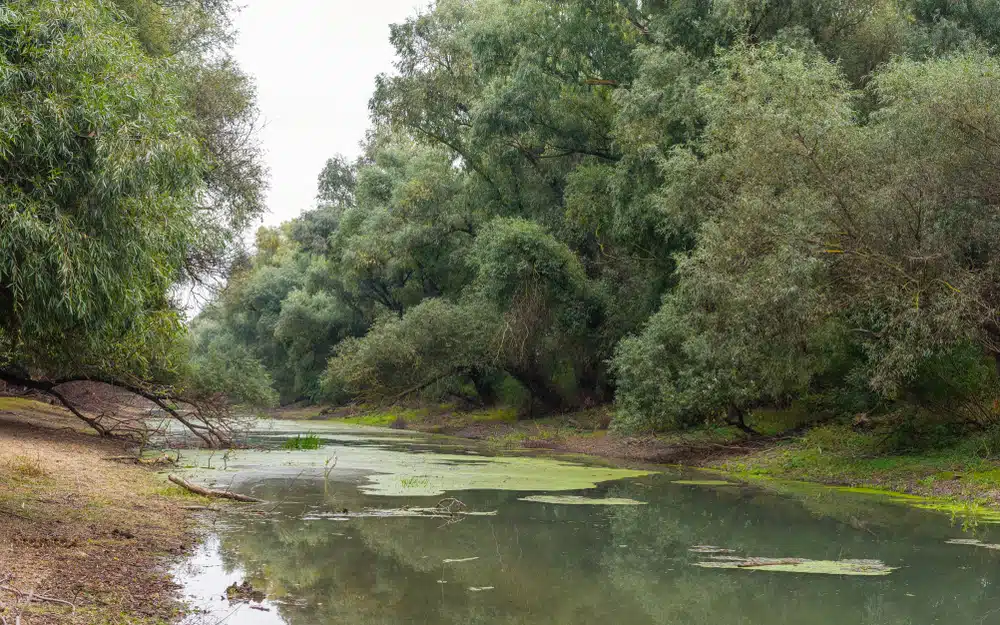
Willows in the Danube Delta
Situated on the Sfântu Gheorghe Arm, Mahmudia is an ideal gateway to the wonders of the Danube Delta. From here you can set off on excursions to explore the lakes, wild beaches and forests of this unique area in Europe.
Among the most popular destinations are Lake Gorgova, famous for its snow lilies and diversity of birds, Sfântu Gheorghe Arm, where the Danube meets the sea, Perisor beach and Letea forest. Sulina, the only town in the Delta, completes the list with its quiet beach and its special charm. From Mahmudia, the possibilities for exploration are almost endless, with tour operators in the area able to customize trips to any destination in the Danube Delta, from Mila 23 to Caraorman.
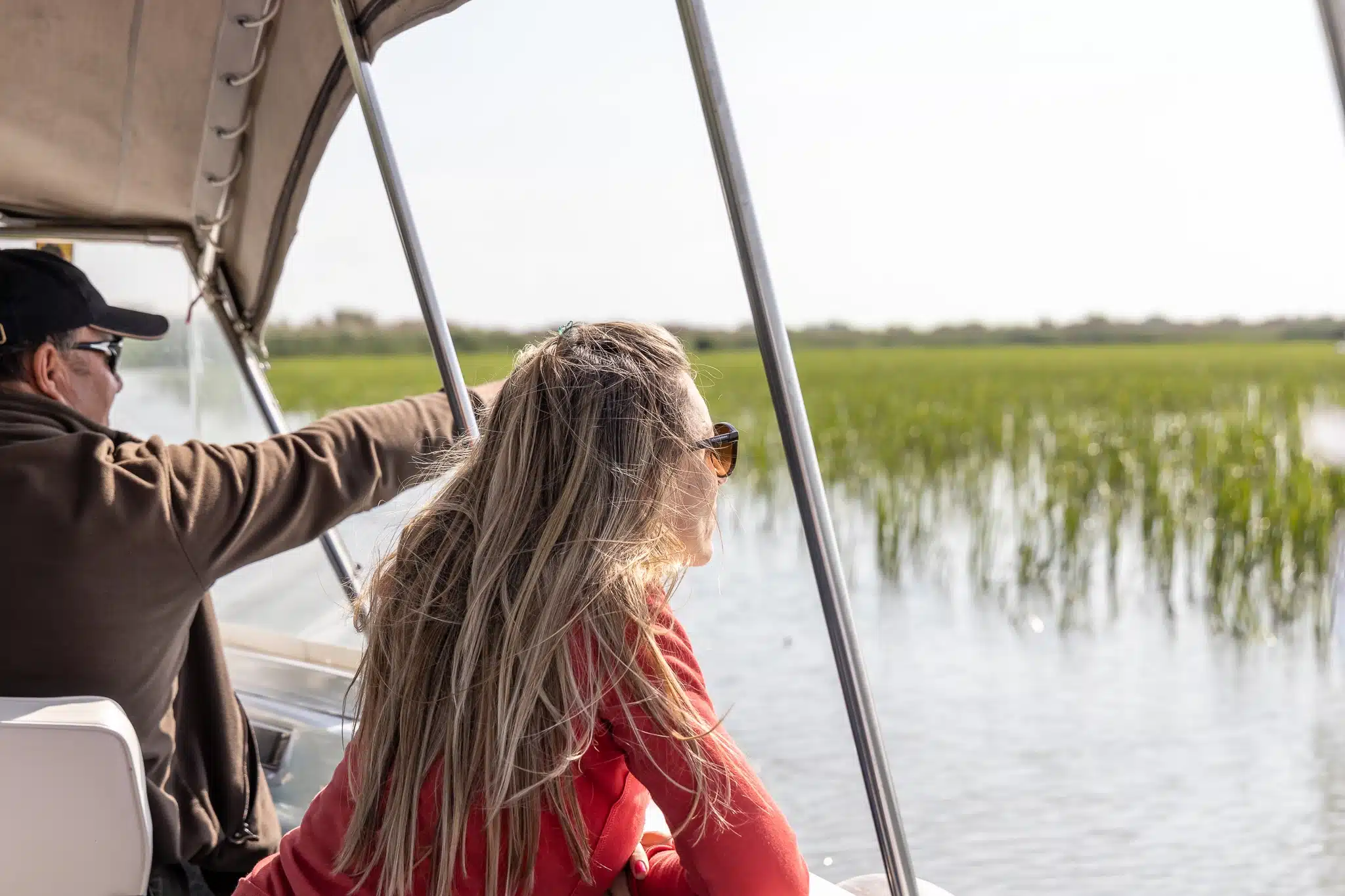
Boat trip in the Danube Delta
👉 If you want to truly experience the magic of the Danube Delta, tap into the range of experiences we offer at the Green Dolphin resort and choose the one that best suits your hobbies and personality.
Mahmudia is more than just a tourist destination; it’s a gateway to a world of its own, where every corner of the delta tells a story. Combining fascinating history, natural landscapes of rare beauty and genuine local hospitality, this place has the gift of giving you the escape you crave from the hustle and bustle of everyday life. Let yourself be carried away by its charm and discover the magic of a unique world.
Photo source: Green Dolphin, Shutterstock [1, 2, 3, 4, 5, 6, 7]

